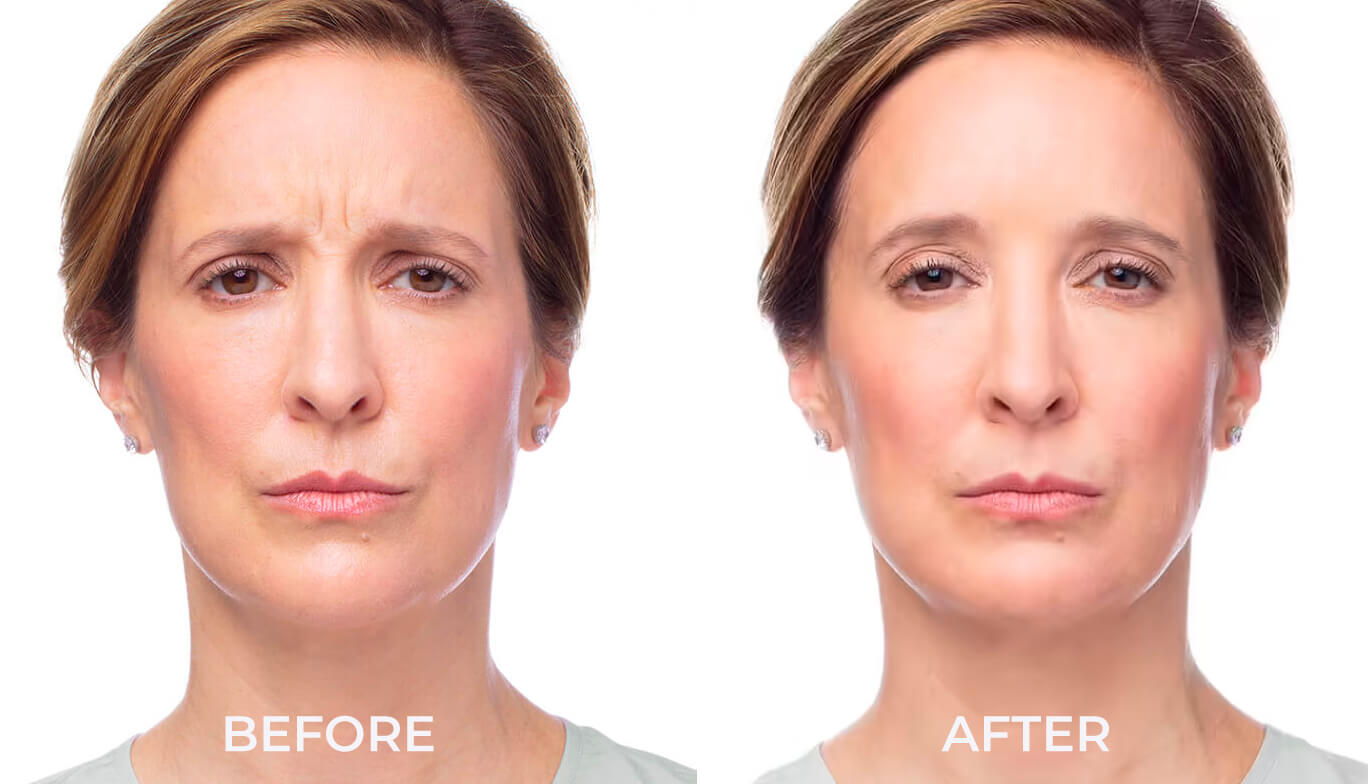
The face is a landscape of expression, and the eyes, framed by the forehead and eyebrows, serve as its most crucial focal point. As time, gravity, and habitual facial movements take their toll, the subtle descent of the brow—a condition known as brow ptosis—can dramatically alter one’s perceived emotional state, often causing an appearance of perpetual fatigue, anger, or sadness. A brow lift, or forehead lift, is a targeted surgical procedure designed to reposition the lowered brow line, smooth horizontal forehead wrinkles, and minimize the deep vertical lines between the eyebrows (glabellar lines). The procedure’s benefits extend far beyond simple cosmetic enhancement, providing significant functional and psychological improvements that restore a more rested, engaged, and youthful appearance. Understanding the full spectrum of these benefits requires a detailed look at how elevating and stabilizing the brow fundamentally re-engages the upper third of the face, correcting shadows, relaxing tension, and improving the overall light reflection that defines youthful vitality.
The Subtle Descent of the Brow Can Dramatically Alter One’s Perceived Emotional State
One of the most immediate and impactful results of a brow lift is the correction of negative non-verbal signaling. The subtle descent of the brow can dramatically alter one’s perceived emotional state, frequently leading to misunderstandings in social and professional settings. When the lateral (outer) tail of the eyebrow droops, it creates a heavy, hooded look over the eyes and deepens the shadows cast around the orbital rim. This often translates to an unintentional expression of displeasure or weariness, even when the person is feeling alert and positive. By precisely elevating the brow to a more youthful and natural position, the procedure subtly but profoundly alters the visual communication of the face. The restored, open expression is one of alertness and approachability, aligning the patient’s outer appearance with their inner vitality, thereby providing a significant boost to self-perception and confidence in social interactions.
The Forehead’s Horizontal Lines Are Directly Targeted and Smoothed
Beyond the brow’s position, the action of the underlying musculature—specifically the frontalis muscle—is responsible for the deep horizontal furrows that etch across the forehead. The necessity of using this muscle to constantly compensate for a sagging brow exacerbates these lines. The forehead’s horizontal lines are directly targeted and smoothed during a comprehensive brow lift. Many modern techniques involve the strategic weakening or partial severance of the frontalis muscle itself. This physical interruption of the muscle’s pull reduces the chronic, repetitive folding of the skin. As the skin relaxes and the brow is mechanically supported in its elevated position, the forehead surface becomes noticeably smoother, a result that significantly exceeds what is typically achieved through temporary injectables like botulinum toxin alone, especially when the lines are deep and static.
Improvement in Glabellar Lines, Often Called the “11s”
The deep vertical furrows that form between the eyebrows, known as glabellar lines or the “11s,” are primarily caused by the hyper-functional action of the corrugator supercilii and procerus muscles. These lines are strongly associated with expressions of concentration, stress, or anger. A significant benefit of the brow lift is the lasting improvement in glabellar lines, often called the “11s.” During the procedure, the surgeon gains direct access to these muscles. By selectively weakening or surgically disrupting these underlying muscle groups, the procedure offers a far more permanent relaxation in this area than can be achieved through non-surgical means. This permanent or long-lasting attenuation of the primary muscles of negative expression contributes powerfully to the overall rejuvenated and relaxed appearance of the upper face, helping to eliminate the unconscious signal of hostility or tension.
Releasing the Weight on the Upper Eyelids Provides a Functional Advantage
Perhaps the most critical, often overlooked benefit of the brow lift is functional. Releasing the weight on the upper eyelids provides a functional advantage that can sometimes qualify the procedure as medically necessary. When the brow droops significantly, the skin folds over the upper eyelid margin, creating a visual obstruction. Patients instinctively try to compensate for this heavy, hooded feeling by constantly engaging the forehead muscles, leading to chronic muscle fatigue, tension headaches, and sometimes even vision problems in the superior visual field. By elevating the brow, the surgeon effectively removes this excess skin burden from the upper eyelid, which can improve peripheral vision and relieve the patient of the constant, exhausting effort of lifting their own brows throughout the day. This functional improvement can dramatically enhance a patient’s comfort and daily quality of life, moving the procedure from purely aesthetic to therapeutic.
The Long-Term Results Tend to Be More Stable
Compared to non-surgical treatments aimed at the upper face, a brow lift offers superior durability. The long-term results tend to be more stable because the procedure involves surgically repositioning and anchoring the deeper tissues and skin structures. While injectable fillers and toxins offer temporary correction, the brow lift directly addresses the root cause of the descent: the slackening of the periosteal and ligamentous attachments that hold the brow in place. By physically tightening and suspending the forehead tissue, the surgery resets the anatomical position. Although the face will continue to age naturally after the procedure, the initial, significant correction is structurally locked in, making the effect far more persistent and cost-effective over a decade than the cumulative cost and effort of repeated non-surgical treatments.
Excess Upper Eyelid Skin is Better Addressed
A common misconception is that all upper eyelid drooping can be resolved by a blepharoplasty (eyelid lift). However, if the primary issue is brow ptosis, simply removing eyelid skin without addressing the heavy brow will yield an unsatisfactory, often unnatural result. The cosmetic benefit of a brow lift is that it clarifies the optimal approach: excess upper eyelid skin is better addressed after the brow is in its proper position. In many cases, the brow lift alone is sufficient to eliminate the pseudo-excess skin over the eyelid. If residual skin remains, a subsequent, minor blepharoplasty can be performed. Treating the forehead first ensures that the surgeon removes only the actual residual skin excess on the eyelid, avoiding the “pulled” look that can result from trying to over-excise eyelid skin to compensate for an uncorrected, low-sitting brow.
The Underlying Structures Are Repositioned and Secured
Modern brow lift techniques have evolved significantly from older, more invasive procedures, favoring minimal access methods like the endoscopic brow lift. This evolution means the underlying structures are repositioned and secured through smaller incisions, often hidden within the hairline. The endoscopic approach utilizes a small camera and specialized instruments, allowing the surgeon to visualize and release the deep muscular attachments responsible for the frowning and creasing, and then elevate the forehead tissue. The fixation devices used—which can be temporary sutures, screws, or absorbable anchors—secure the elevated tissue to the skull bone (periosteum), preventing immediate relapse and promoting healing in the new, higher position. This internal anchoring is the key to the procedure’s long-term effectiveness, ensuring the elevation holds up against the constant pull of gravity and muscle action.
There Is a Harmonizing Effect on the Entire Periorbital Area
A successful brow lift rarely looks like a localized intervention. Instead, there is a harmonizing effect on the entire periorbital area, subtly improving the balance and proportion of the upper face. By properly aligning the forehead and brows, the procedure shifts the visual focus back to the eyes themselves. The lifted brow lightens the area, reducing shadows and creating the optical illusion of wider, more open eyes. This correction often minimizes the appearance of dynamic lines around the lateral eyes (crow’s feet) because the patient no longer needs to squint as intensely to overcome the visual heaviness. The overall result is a refreshed, balanced, and rejuvenated look that feels organic, subtle, and natural, avoiding the over-corrected appearance of an isolated procedure.
Chronic Tension Headaches Can Be Significantly Reduced
The aforementioned functional strain of constant muscle compensation has a direct impact on patient comfort. The continuous, unconscious contraction of the frontalis and glabellar muscles to manually lift a heavy brow is a known trigger for a specific type of discomfort. Consequently, chronic tension headaches can be significantly reduced following a brow lift. By surgically interrupting the nerve pathways or weakening these hyper-functional muscles, the procedure eliminates the source of the chronic tension and fatigue that often manifests as daily headaches. For patients who have spent years relying on medication to manage these muscle-induced headaches, the relief provided by the brow lift is a profound, non-aesthetic benefit that speaks volumes about the procedure’s functional value and its impact on day-to-day well-being.
Self-Confidence is Often the Most Profound and Lasting Result
Ultimately, while the technical measurements and anatomical corrections are vital, the most valuable outcome is often psychological. Self-confidence is often the most profound and lasting result of a successful brow lift. By resolving the disconnect between how a patient feels inside and how their perpetually tired or stern-looking reflection appears in the mirror, the procedure restores a sense of harmony. Patients no longer feel the need to constantly raise their eyebrows to appear alert or worry about their resting face sending the wrong signals. This restoration of a bright, open expression and the reduction of chronic physical strain collectively empower the patient, leading to increased self-assurance and a more positive engagement with the world around them.
